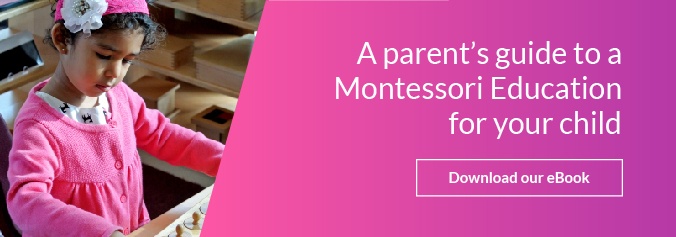When you go to observe a Montessori class, it will look different than the traditional school environment. You will not see rows of desks where students sit most of the day completing worksheets and listening to lectures. Instead, you will see a classroom that is full of movement and interaction. Some parents wonder if the design of the Montessori classroom prevents it from being an academically challenging environment. The reality is that the design of the Montessori classroom makes it possible to provide a much higher level of academic challenge than the traditional classroom.
Focused time allows for exploration and learning
Dr. Maria Montessori observed that even young students could spend time in focused learning. When students are provided with the right set of circumstances, focused learning occurs naturally. For example, the teacher in the Montessori classroom designs individualized learning plans based on the interests and academic level of the student. Providing learning opportunities that align with the interests of each student is a way to tap into students’ natural curiosity. Students in the Montessori classroom are expected to spend time on individual, focused work on a regular basis. This style of learning is challenging and helps students develop the skill of concentration which they will use throughout their formal education and lives.
Mixed-age classrooms provide opportunities for additional academic challenges
The mixed-age design of the Montessori classroom provides opportunities for additional academic challenges. The younger students in the classroom get the opportunity to observe, interact with, and learn from the older students. This pushes the younger students to work toward greater understanding. The older students learn to be leaders through their interactions with the younger students. Teaching younger students also helps cement concepts for the older students. The mixed-age design of the classroom helps create an academically, challenging environment.
Self-directed learning lets students continue to make progress
Students in the Montessori classroom are provided with the opportunity to engage in self-directed learning. This means that students have choices when it comes to how and what they learn. Students are provided with learning options that are tailored to their needs, learning style, and level and get the opportunity to decide between those options. This design is an important part of an academically challenging environment because it allows each student to be challenged at the appropriate level. For example, a student who works well beyond grade level in math does not have to wait on other students to catch up before moving on to the next concept. That student will have learning options that allow him or her to continue being challenged academically.
The definition of ‘academically challenging’ will vary for each student in the classroom. In order for a classroom environment to be academically challenging for each child, it must be designed to meet the individual needs of the students. The Montessori philosophy puts an emphasis on meeting the academic needs of each student, so instruction is engaging and challenging.












Let us know what you think about this post
Put your Comment Below: